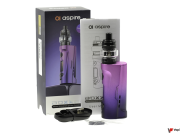Despite an incessant amount of scientific evidence to the contrary, last week the WHO, urged smokers and governments to not trust claims about the relative safety of non-combustible products.
“The tobacco industry has a long history of systemic, aggressive, sustained and well-resourced opposition to tobacco control measures,” said the WHO report, completely disregarding the fact that in most cases the vaping industry is not, and does not want to be affiliated with the tobacco industry.
“While some strategies are public and others more covert… all have the goal of weakening tobacco control,” added the WHO inaccurately. The seventh “WHO report on the global tobacco epidemic” insists that blocking the tobacco industry’s interference is critical to fight the smoking epidemic.
The WHO report disregards the fact that in most cases the vaping industry is not, and does not want to be affiliated with the tobacco industry.
According to Reuters, the report explained how tobacco giant Philip Morris International (PMI) is trying to position itself as wanting to fight smoking via its “Unsmoke” campaign, which encourages people to “change to a better alternative”. The WHO (perhaps rightly so) said that PMI is being manipulative by trying to convince the public that its moral compass is now pointing in the right direction, whilst its sole aim may be remaining relevant on the market.
Vinayak Prasad, programme manager of WHO’s tobacco control unit, said that the development of new products was solely intended to expand the markets of tobacco firms. “There is no difference between cigarettes and heated tobacco products except that in terms of exposure: the exposure is less and the smoke is not visible,” he said. However he is wrong.
Several independent studies have indicated that just like vaping products, Heat not Burn (HnB) products are significantly safer than combustible cigarettes. And despite the fact that no one feels comfortable about Big Tobacco’s actions, the WHO should not be spreading lies or inaccurate facts about products that can significantly reduce harm.
Comparing Emissions from HnBs, E-Cigs and Cigarettes
In fact, a number of independent studies have indicated the relative safety of the products. A 2018 study by renowned anti-smoking expert Dr Konstantinos Farsalinos had analyzed and compared carbonyl emissions from an HnB device, an e-cigarette and a regular cigarette.
When comparing 20 heets sticks with the same amount of cigarettes, an 81.7 to 97.9% level of reduced emissions were measured.
The products used in this study were PMI’s IQOS, both regular and menthol variants, the Nautilus Mini e-cigarette, a tank-type atomizer tested with a tobacco-flavoured liquid at 10 W and 14 W and a Marlboro Red cigarette. Aerosol and smoke were collected in impingers containing 2,4-dinitrophenylhydrazine and Health Canada Intense and two more intense puffing regimes were used to measure levels of carbonyl.
When using 5g of e-cigarette liquid, in comparison to 20 cigarettes a 92.2 to 99.8% reduced level of carbonyls is noted. Whilst when comparing 20 heets sticks with the same amount of cigarettes an 81.7 to 97.9% level of reduced emissions were measured.
At Health Canada Intense regime, heated tobacco products emitted 5.0-6.4 μg/stick formaldehyde, 144.1-176.7 μg/stick acetaldehyde, 10.4-10.8 μg/stick acrolein, 11.0-12.8 μg/stick propionaldehyde and 1.9-2.0 μg/stick crotonaldehyde. Compared with the tobacco cigarettes, levels for HnB devices were found to be 91.6% lower for formaldehyde, 84.9% lower for acetaldehyde, 90.6% lower for acrolein, 89.0% lower for propionaldehyde and 95.3% lower for crotonaldehyde.
With regards to e-cigarettes, no levels of propionaldehyde and crotonaldehyde, and very low levels of the other carbonyls were detected. When using 5g of e-cigarette liquid, in comparison to 20 cigarettes a 92.2 to 99.8% reduced level of carbonyls is noted. Whilst when comparing 20 heets sticks with the same amount of cigarettes an 81.7 to 97.9% level of reduced emissions were measured.
HnB have lower emissions than cigarettes but higher than e-cigs
The researchers had concluded that the IQOS HnB device emits substantially lower levels of carbonyls than a regular cigarette (Marlboro Red) but higher levels than a Nautilus Mini e-cigarette.
In 2017, lead researcher Dr. Farsalinos, replicated two renowned studies which had made alarming claims about aldehyde emissions from e-cigarettes, and found inaccuracies in the way the levels were measured. Farsalinos had pointed out that unfortunately “the field of e-cigarette research has an unusually high number of studies reporting “strange” (to say the least) results.”













